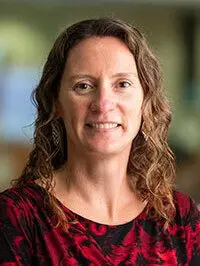By reprogramming cells from a patient to yield induced pluripotent stem cells, scientists and clinicians can wield a fertile and versatile resource for personalizing patient healthcare via regenerative medicine, cell therapy or disease modeling for drug testing.
But this reprogramming is far from a neat-and-tidy process; not all cells follow the desired pathway, and sifting through batches to pick out those precious stem cells generally requires techniques that are slow, laborious and oftentimes destructive to the cells themselves.
A team of University of Wisconsin-Madison biomedical engineers has devised an innovative method that leverages micropatterning, label-free imaging and machine learning to enable real-time, noninvasive monitoring of reprogramming. Their proof-of-concept, presented in a new paper in the journal GEN Biotechnology, offers a high-throughput option for quality control in biomanufacturing of induced pluripotent stem cells (iPSCs), which can in turn be used to develop cutting-edge personalized therapies and disease models.
 Associate Professor
Associate Professor
Krishanu Saha
“There are billions of dollars being invested in stem-cell-derived cell products, and a bottleneck has been to identify high-quality stem cells that would be appropriate for subsequent manufacturing toward injectable cell therapies,” says Krishanu Saha, an associate professor of biomedical engineering and senior author on the paper. “Therefore, a real-time, label-free tool to track cell state in these heterogeneous stem cell cultures is very important. With this tool, we have gained unprecedented insights into reprogramming biology and heterogeneity.”
The project was a collaboration between Saha’s lab in the Wisconsin Institute for Discovery and Professor Melissa Skala’s group in the Morgridge Institute for Research, both housed in the Discovery Building on the UW-Madison campus.
Kaivalya Molugu, a recent PhD graduate in biophysics from the Saha lab and the paper’s first author, had previously used high-resolution imaging of cells’ nuclei to predict reprogramming outcomes. That method, though, necessitated halting the cells’ growth. With support from the UW-Madison Stem Cell and Regenerative Medicine Center, Molugu integrated imaging techniques from Skala’s lab that track metabolic changes based on the natural fluorescence of several molecules found in cells, rather than relying upon an added dye or other invasive labeling method that could unintentionally alter the cell.
 Professor Melissa Skala
Professor Melissa Skala
“Cells, as they get reprogrammed into stem cells, change the way they produce energy substantially, and that’s something we can trace with molecules that naturally give off light in the cell,” says Skala, who envisions eventually integrating optical equipment into an incubator or bioreactor for true real-time monitoring of cell cultures.
Using a micropatterned substrate, Molugu tracked islands of cells during the 22-day reprogramming process, identifying signatures in both the metabolic and nuclear imaging data, and used machine learning algorithms to predict cells’ reprogramming trajectories. Her models classified iPSCs with 95% accuracy while greatly reducing the time required for identification.
“You can just image the reprogramming cells, run it through our machine learning process and identify the stem cells immediately so that you can use them for downstream applications,” says Molugu, who’s now a scientist at the biotechnology company Editas Medicine in Cambridge, Massachusetts. “It’s really an attempt to reduce the time between getting the cells from the patient and trying to get them back into the patient for stem cell-based therapies.”
Saha says the project reflects a growing emphasis on incorporating data science into the stem cell biology field. He has already introduced Molugu’s work into his BME 520: Stem Cell Bioengineering course for upper-level undergraduates and graduate students.
Associate Professor Krishanu Saha is also a Wisconsin Institute for Discovery faculty member, the Cell and Gene Therapy Lead for the Grainger Institute for Engineering, the Interventional Genomics Lead for the Center for Human Genomics and Precision Medicine, and holds the Retina Research Foundation Kathryn and Latimer Murfee Chair through the McPherson Eye Research Institute at UW-Madison. Professor Melissa Skala is an investigator at the Morgridge Institute for Research and holds the Retina Research Foundation Daniel M. Albert Chair through the McPherson Eye Research Institute.
Other authors include recent UW-Madison graduates Giovanni Battistini, Tiffany Heaster and Jacob Rouw, and Skala Lab member Emmanuel Guzman.
Photo caption: The colors in this image of induced pluripotent stem cells indicate the relative oxidation-reduction state of cells, allowing the researchers track metabolic changes during the reprogramming process. Submitted photo.